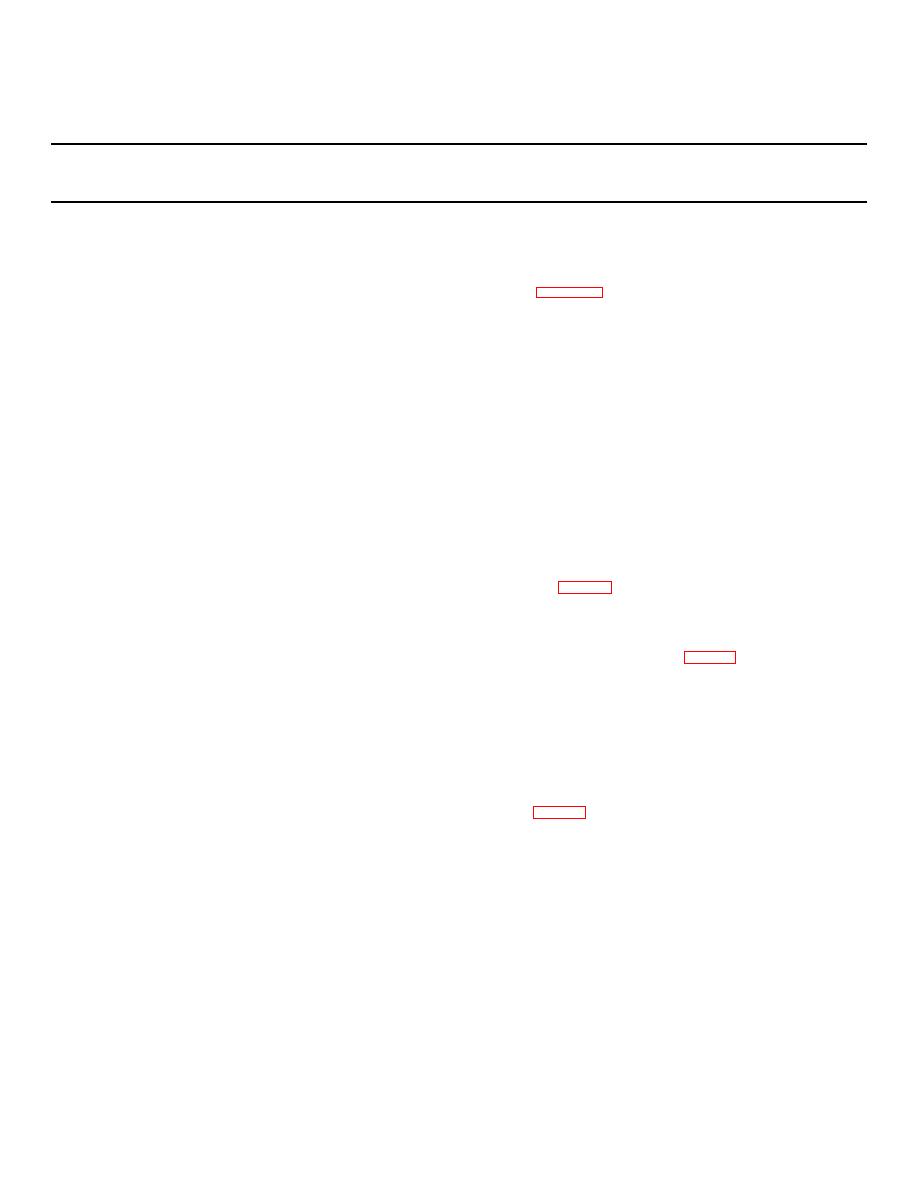 |
|||
|
|
|||
|
|
|||
| ||||||||||
|
|
 TM 5-4320-234-34
Table 2-1. Troubleshooting - Continued
MALFUNCTION
TEST OR INSPECTION
CORRECTIVE ACTION
CENTRIFUGAL PUMP CONTINUED
d. Inspect the impeller for cracked, chipped, worn or broken vanes, damaged orstorted bore or keyway.
id
Replace a damaged impeller.
(1) Reassemble the pump by reversing the disassembly sequence in figure 2-15. Note the following.
a. Press the seal stationary member (26) into seal plate (29) before installing the plate. Lubricate the impeller shaft lightly
with oil and slide the seal rotating member (25) and spring into place on the shaft
b. If the same impeller (20) and wear plate (17) are reassembled and no clearance change is indicated, use shims (22 and
23) of the same thickness as those removed. If a new impeller and/or wear plate is installed, determine the shim
thickness required to obtain a clearance of 0.010 to 0.020 inch (0.025 to 0.05 cm) between the impeller and wear plate as
follows:
c. Install impeller (20) on shaft without shims. Be sure that Impeller is seated firmly against the shaft shoulder.
d. Install volute (18) with wear plate (17) assembled, and secure with screws (12) and lockwashers (13).
e. Insert a feeler gage into the front openig of the volute and measure from the face of the impeller (20) to the face of the
n
wear plate (17)
f. Select shims (22 and 23) to equal the dimension obtained less 0.010 to 0.020 inch (0.025 to 0.05 cm) clearance.
(2) After reassembly, when using either new or used parts, recheck the clearance; it must be 0.010 to 0.020 Inch (0.025 to 0.05 cm).
Check the impeller shaft for free rotation. It must turn freely without catching or binding. If binding is evident, disassemble the
pump and correct the condition.
(3) Use a hoist or other lifting device and install the pump on the chassis. Install nuts and lockwashers that secure the pump body to
the bearing housing.
(4) Install screws (4, fig.-14), lockwashers (3) and nuts (2) that secure pump (1) to the chassis.
NOTE
If you are installing the same pump you removed, use shims (5, 6 and 7, fig. 2-14) having the same thickness as
the ones removed. If a different pump is being installed, provide shims having proper thickness for as long the
bearing housing with the flywheel housing of the engine.
Step 2. Check for incorrect impeller-to-wear plate clearance.
a. Insert a feeler gage into the front opening of the volute and measure from the face of the impeller (20, fig. 2-15) to the face of the wear plate
(17).
b. The correct clearance should be 0.010 to 0.020 inch (0.(25 to 0.05 cm).
If the clearance between the face of the impeller and the face of the wear plate is not 0.010 to 0.020 inch (0.025 to 0.05 cm) the pump
must be disassembled and shims added to obtain the correct clearance.
Refer to malfunction one to remove, disassemble, reassemble and install the pump.
Step 3. Check for excessively worn wear plate.
a. Refer to malfunction one to remove and disassemble the pump.
b. inspect the wear plate for wear, scoring, and distortion.
If any damage to the wear plate is evident, replace it. Refer to Malfunction 1 and reassemble and install the pump.
Step 4. Check for defective shaft seal.
a. Use a hoist or other lifting device to support the weight of the pump (1, fig. 2-16). Remove nuts (2), lockwasher (3), and screws (4) that
secure the pump to the chassis frame.
2-20
|
|
Privacy Statement - Press Release - Copyright Information. - Contact Us |